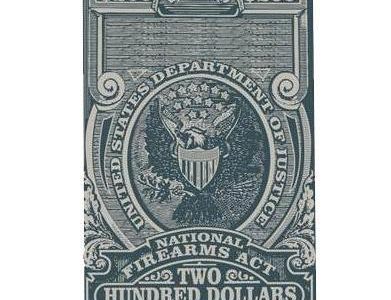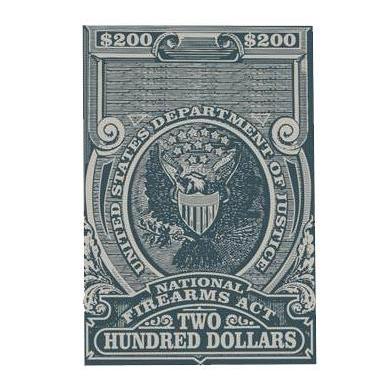Some of the most common questions we receive regarding NFA trusts are about how they functions to contain and manage weapons, during your lifetime and beyond. To answer this question requires a little background on what a trust is, and how it is drafted. A trust is its own legal entity.
Who can own Trust Property
It designates a primary individual who directs the trust and contains information about who is able to possess and use trust property, as well as who is allowed to inherit trust property. For a weapons trust, the purpose of the document is to assign ownership of weapons to the trust, rather than the individual. This has estate planning implications that become especially important when the items are classed as NFA weapons or accessories.
Tax stamps
When a suppressor, for example, is purchased and a tax stamp is applied for, the ATF can assign the stamp to a person or a trust. If the suppressor is assigned to an individual, only that individual can possess or use the item during their lifetime. As the trust is its own legal entity, the ATF is able to issue tax stamps in the trust name instead of an individual’s personal name.
Those assigned as co-trustees can legally possess the trust property during the primary trustee’s lifetime. Whereas most NFA weapon enthusiasts are familiar with this use of trusts, many are unaware that the trust also acts like an estate-planning document, demonstrating what should happen to the trust and its contents in the event of your death.
Ownership transfer if you die
Upon the death of the owner of a suppressor with an individually-assigned tax stamp, the suppressor could not be legally possessed by their family or executor of their will. Even keeping the item in the family’s home after the death of the owner without the proper tax stamp would constitute illegal possession. The property would instead have to be turned over to local law enforcement until a Form 5 could be processed. Only then could the family member receive the property.
That item would be transferred via a tax stamp to the new individual. This process would need to be repeated for every single NFA item that the deceased person possessed. With a large collection, this would obviously be a long and tedious process, and might delay the liquidation of a planned estate sale if the items were valuable. With a trust, however, the individuals you assign as beneficiaries can take possession all of the trust property immediately, without having to perform a Form 5 transfer. You can specify which items go to which beneficiary, which would provide a great deal of clarity for your family.
Why assignment of property is important
So, why is a separate Assignment of Property form needed from the main trust and how does it work? Whereas the main trust lays out who may possess and inherit the property, it does not actually list that property. The Assignment of Property portion of the trust specifies what property the trust owns. However, there is not, and shouldn’t be, specifics within the main corpus of the trust about the property itself. This is because if the body of the document contained these specifics, it would need to be entirely re-drafted every time the property was altered. So, if a weapon were sold, the entire trust would need to be revised. The position of the Assignment of Property as a separate part of the trust ensures that the document can be easily revised while maintaining the integrity of the trust itself.
When the trust is initially created, an Assignment of Property needs to be filled out with information about the item you are granting to the trust. This includes both regular weapons and any NFA weapon or accessory. When this page is signed and added to the trust documents, you are granting that item to the trust. It is common to have a running collection of Assignment of Property pages, with each page representing an item you have added to the trust.
The page commonly includes a description of the weapon or accessory, serial number, tax stamp number (if applicable), and a beneficiary assignment. If you were to sell an item from the trust, you would remove that specific Assignment of Property page from your trust documents. These pages do not need to be sent to the ATF, but simply kept updated and organized in your files. It is helpful to think of your trust documents as accomplishing two different things- one set is used along with your ATF paperwork and filed with your tax stamps, and one is set is personally updated and maintained like a will at home in your files.
Keeping good records of your tax stamps, trust, and Assignment pages ensures that your trust property both maintains compliance with NFA weapon possession and use requirements and provides your family with the assurance that the management of your entire collection is easily transferred upon your death. Please contact us with any questions you may have.




 Fingerprints and Approval
Fingerprints and Approval